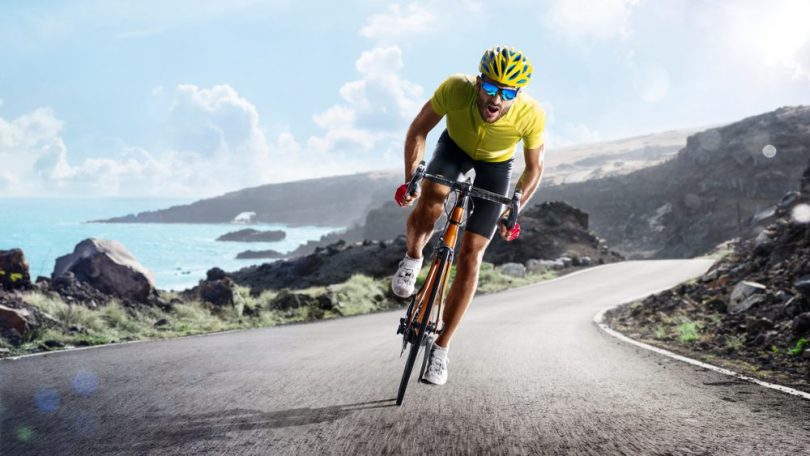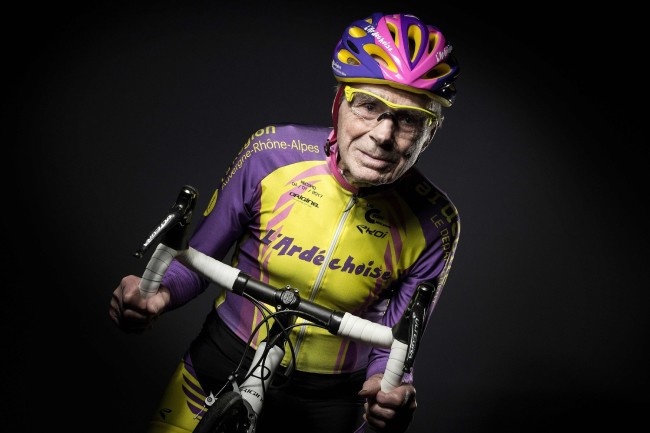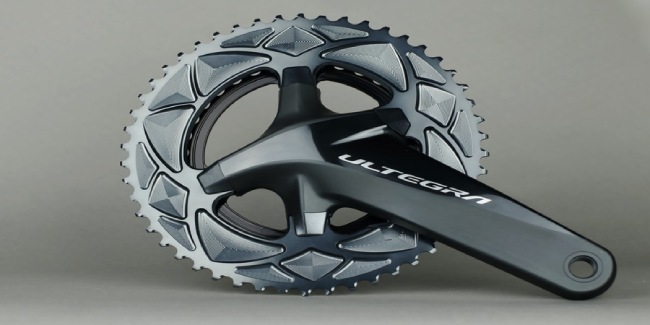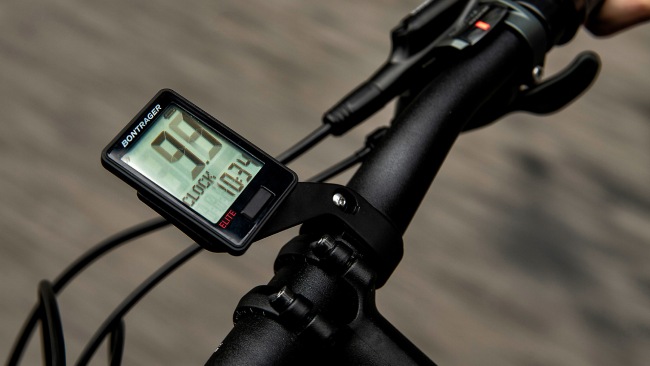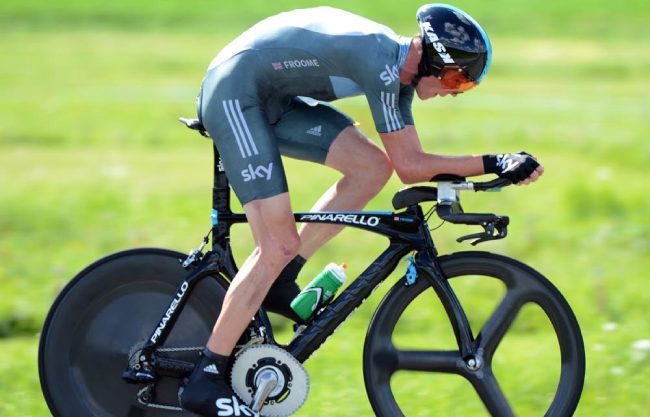The average speed of all types of road bikers lingers between 12-20 mph depending on their skills, gear, and road conditions. But in September 2018, Denise Mueller-Korenek made history at Bonneville Salt Flats, Utah. She hit a mind-boggling 183.932 mph, hammering all the bicycle land speed records of the past!
10-15 mph is an easily attainable average speed for most bikers with limited training. The moderately experienced bikers can reach between 20-30 mph short-distance while pros can reach 40 mph at their best.
Factors That Affect Your Road Bike Speed
-
Weight
The effect of weight is evident on the bikes. Both your own weight and the weight of your bike have an effect on your average speed. The gravitational force may work against you while moving forward if you or your bike is on the heavier side.
For instance, a 150-pound male with a 10-pound bike will be faster than a 200-pound male with a 20-pound bike even when they have very similar pedaling strength.
Some racing bikes are barely four pounds. You can easily lift a racing bike with a few fingers because they are made of super-lightweight and top-class materials. On the other hand, regular road bikes weigh between 15 to 20 pounds.
-
Cyclist’s age
Cycling is indirectly associated with your age and biking experience. Your age and stamina will determine the amount of power you can produce.
The same goes for underage riders since they lack the muscles they need to reach the top speed.
-
Strength and endurance
Fitness is a big fact when it comes to speeding up on your road bike. The fitter you are, the faster you’ll be on your bike.
If you are a sprinter, focus on how fast you can go in a short-distance sprint first. You may focus on how far you can ride and what speed you can achieve if you’re an endurance biker.
-
Air resistance
Factors like resistance, drag, and friction will slow you down. Wind speed and air density can also keep you from reaching your maximum speed.
Your riding posture will also have a role here. The faster you go, the greater the resistance will be. Try to reduce your body profile by crouching low on the bike for a more efficient form. This will allow air to pass over your curved body without hitting the chest.
Factor in your choice of clothes and headcovers. Too many clothes or a loose round helmet with a hood will definitely catch air and slow you down.
Don’t forget the other features on your bike that can cause stiff resistance such as your wheel profile, extensions, and accessories.
-
Suspensions
The regular road bikes may not have suspensions that help you ride faster by lessening the strain on your major muscles.
A good suspension system lets you sprint up to 35mph on a level road even with a cross country bike with the knobbiest tires. You’ll be at least 15% to 20% faster on a road bike.
-
Gears
Take both internal and easy gears into consideration when choosing a bike. You will need gears to pedal at a higher pace with less effort. The latest models come with automatic internal gear shifters.
You may get only 2/3 outer gears that need manual intervention with the older regular models.
-
Tires and wheels
Get bigger wheels to go faster – that’s the first rule. A thin and large wheel will cut through the strong wind better than a smaller tubbier tire. You’ll see high-end racing bikes fitted with much bigger wheels than the regular.
However, not all tires suit all weather and road conditions. You need to set up different types of wheels for different types of biking sessions. Thicker wheels give you better balance when you take turns and show off your skills. Textured tires usually work well on flat and smooth roads.
Keeping all aside, you need to get larger and lightweight wheels when speed is what you’re after.
-
Hills and plains change your ride metrics
Terrain matters for any transporter vehicle when it comes to calculating speed. You may as well hit 40 mph on a plain surface with your bike, but riding on the hills probably won’t bring about the same result. On average, you can reach about 20 to 25 mph on MTB trails.
A downhill ride can be an entirely different experience as you can go up to 60 mph. We don’t recommend that you pedal while going downhill because you may flip the moment you pull the brake.
-
Wind at your back
Speeding up against the wind is tough when it comes at you from the front. But nothing can stop you when the wind supports and pushes you from behind. You’ll feel the sudden increase in pace as you move forward leaning against the wind. Pedaling should be effortless while going with the wind.
-
Stop signs slow you down
Obviously, your subconscious mind will slow you down whenever the stop signs come up. You may not want to take your road bike and start riding towards a busy area with a lot of stop signs around and then hope for speeding up.
-
Road turns
Avoid roads with more turns and less straight lines. You better take a look at the map before exploring new areas.
-
More cars slow you down
Choose wisely which way to go. A super busy road with a number of cars can slow you down.
-
Rain and dust
Clearly, it’ll be harder to ride in the dirt or rain. Excessive dirt will reduce your vision while downpours will make you heavier and the road slippery.
-
Temperatures have a sweet spot
It takes a considerable amount of energy to warm yourself up in winter or cool yourself down in summer. You’re usually more energetic when it is 65°F to 85°F. The ideal temperature may vary depending on the state and personal adaptation.
-
Riding further takes more effort
You know it gets hard sometimes to go an extra mile before the sunset if you are one of the endurance riders who love roaming the far-away lands. It may not be the easiest to speed up in long-distance cycling when you’re already exhausted.
-
Cloudy vs sunny day
Clouds on a summer day or the sunshine on a cold day can be to your advantage to squeeze out a little more speed by saving your energy. But forget about speed when it is cloudy and freezing outside or blazing hot in the tropical climate.
How to Improve Your Biking Speed?
-
Don’t be overweight
Being heavy can be a major disadvantage against your biking speed. An active lifestyle is the only way to enjoy the most amazing things in life such as speed on a bike.
-
Take care of your wheels
Wheels are one of the key components that directly affect the speed. They will slow you down if they lose their shape.
-
Bearings and chain maintenance keeps you fast
Good bearings are great to speed you up with the bike. Be sure to clean and oil your chain and bearings once a week. It’s a good idea to get replacements for your bearings when they are clogged.
-
Your gearing matters more than you think
Do a bit of research on the gearing systems to learn all the tips and tricks to get the most out of them and how you can maintain them to last longer.
-
Ride with trained cyclist
You only discover what’s keeping you behind when you see how others are doing it better than you. Observe the pros, pay attention to their every move, see how they balance themselves and ride faster, then implement what you’ve learned to ride better.
-
Upgrade to oval chainring
Oval chainrings tend to work better for speed than regular round units. They help to eliminate weak spots and make pedal stroke a bit easy. Pros have mixed opinions about them but you can go ahead and see if they work for you.
-
Lighter bike and equipment
Avoid carrying or wearing heavy equipment when you go biking. Choose a lightweight road bike with an excellent suspension system when you want to be the winner of the race.
-
Computers can influence you
You may slow down if you don’t pay constant attention to speed. A computer works like a timer and can help to keep your determination consistent. It will notify you the moment you slow down so you can push forward again.
-
Watch your lactate threshold
Keep up the energy level and practice your lactate threshold to produce maximum output with the same heart rate. This makes you faster for longer so you can push the pedal at the top average speed.
-
Clothes may catch wind
Pay attention to your dress code. Wear costumes that catch no wind and have a sharp appearance. Baggy outfits can slow you down.
-
Body posture
Lean your body forward and push your head slightly downward to create an efficient posture for speed. Make sure you’re not catching the wind with your chest and watching what’s forward.
-
Familiarity helps
Riding a familiar bike on a familiar road with family and friends gives you an extra boost. New elements might take some time for you to get used to them.
-
Experience is key
Skill and competence comes with experience in any sport. Training and practice will guide you towards the road to becoming a successful racer.
Average speed of a road cyclist?
It actually depends on several factors such as whether your living place is windy or hilly, your fitness, your bike type, and riding style.
But there is datas at Strava lab which shows the average speed of cyclists in different countries. Here is a short list…
- USA – 24.35 km/h for male and 20.51 km/h for female
- UK – 25.61 km/h for male and 19.84 km/h for female
- France – 24.36 km/h for male and 20.74 km/h for female
- Germany – 23.28 km/h for male and 19.94 km/h for female
- Holland – 26.92 km/h for male and 21.36 km/h for female
- Spain – 22.31 km/h for male and 19.86 km/h for female
FAQs
Q. How fast are pro cyclists?
25-28 mph is the average cadence of professional cyclists while traversing on the flat roads.
Q. Can you outrun a bear on a bike?
You can’t unless you’ve already had a long headstart, the skills of a time trial winner, or a very powerful racing bike because an aggressive black bear can run up to 34 mph and have a tendency to chase like dogs.
Q. How fast do Olympic cyclists go?
Olympic cyclists can go above 43 mph on a 250-meter bowl-shaped velodrome track while riding counterclockwise.
Q. What is the highest recorded speed for a bike?
183.932 mph. Denise Mueller- Korenek possesses this record. He broke the previous record of 167 mph on September 16, 2018. This miracle happened at Utah’s Bonneville Salt.
Q. Are road bikes faster than mountain bikes?
Mountain bikes are 10-30% slower than road bikes. It is 15% for the same power output on a paved surface.
The reasons for road bikes being fast are the rolling resistance, frame geometry, weight, and riding posture.

